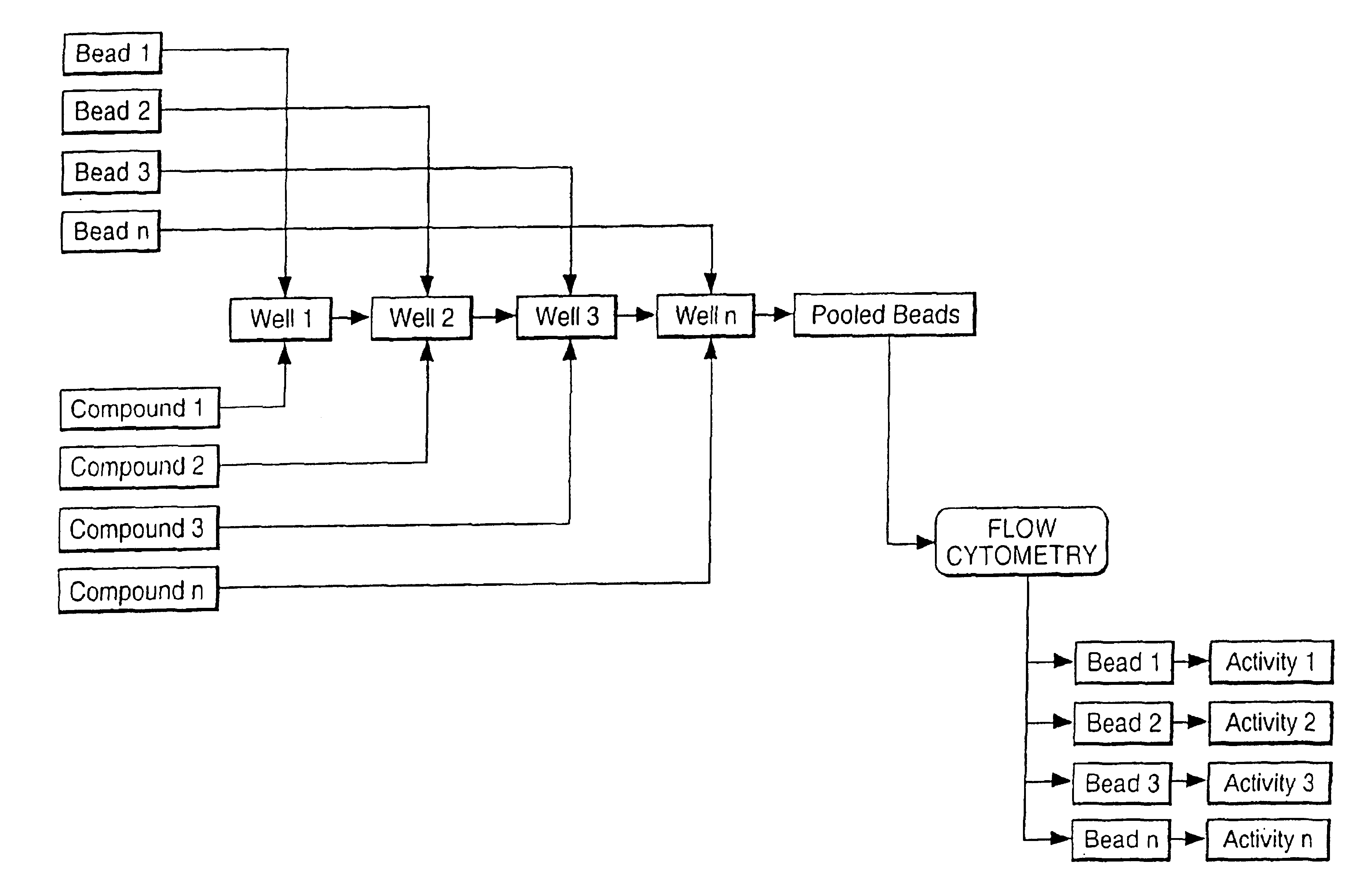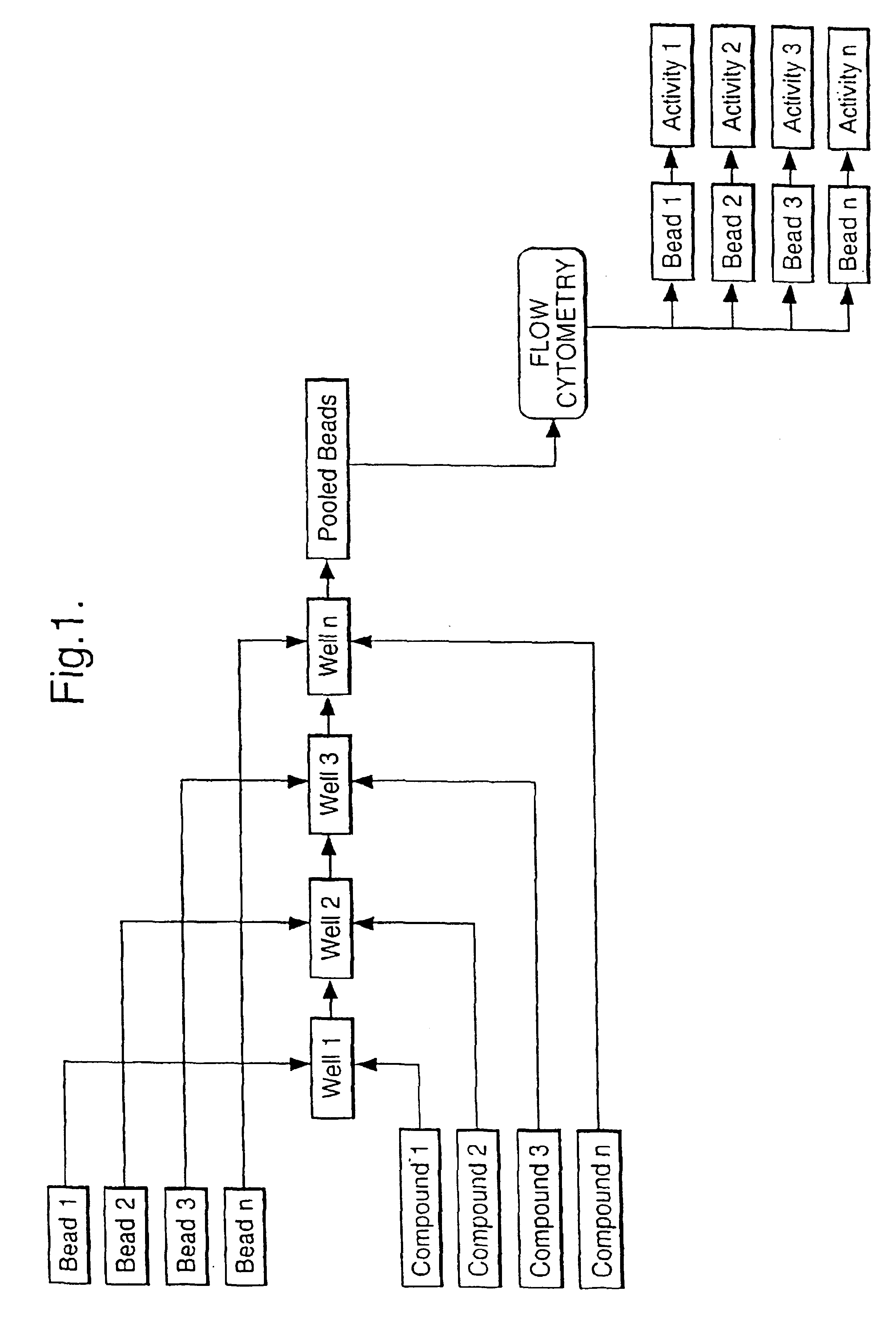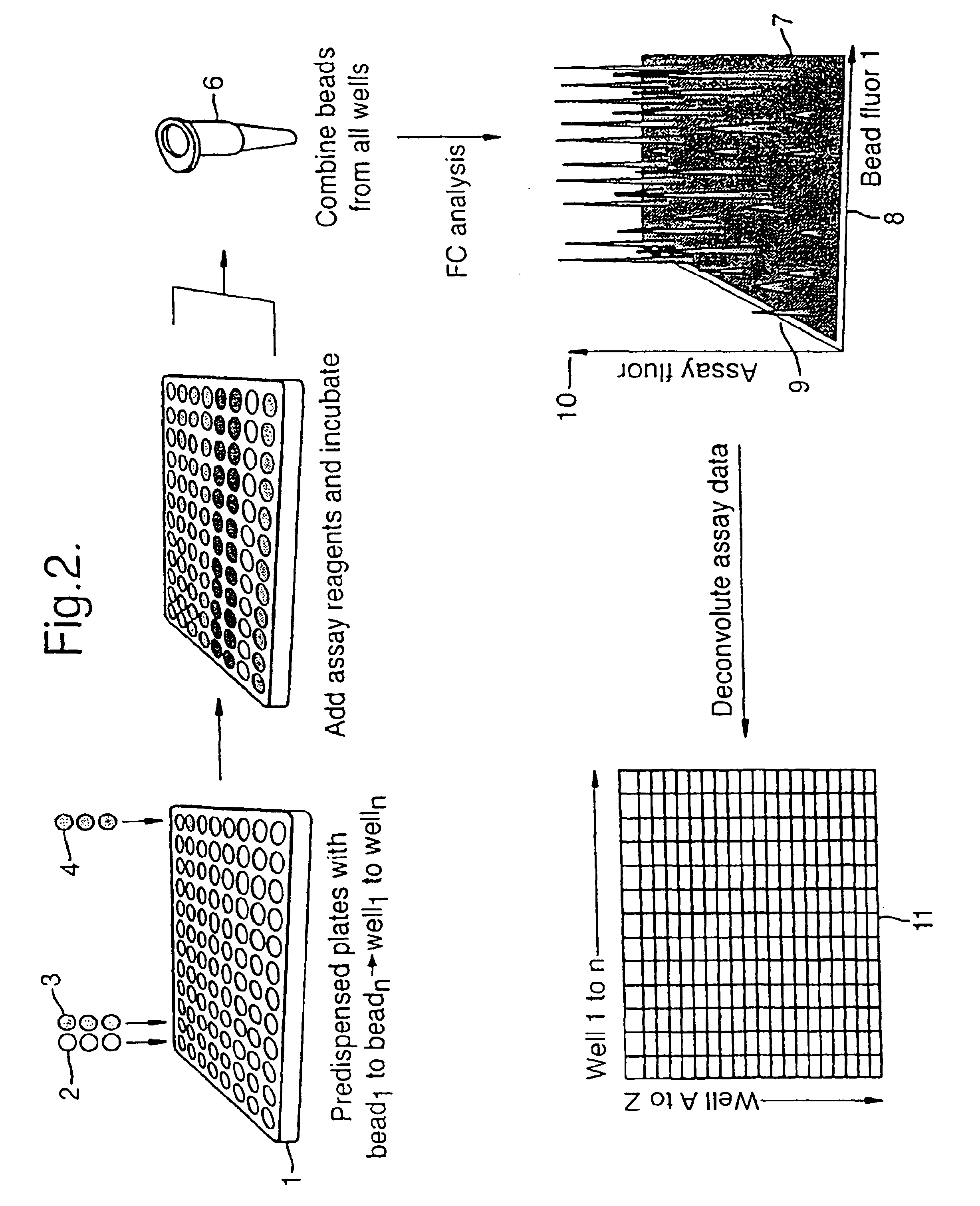Multiple assay method
- Summary
- Abstract
- Description
- Claims
- Application Information
AI Technical Summary
Benefits of technology
Problems solved by technology
Method used
Image
Examples
example
[0050]Streptavidin coated bead type A (yellow fluor) and bead type B (purple fluor) were pipetted into two separate wells of a microtitre plate, such that well 1 contained bead A and well 2 contained bead B. Buffer was added to well 1 and buffer containing biotin was added to well 2. Following mixing arid incubation a solution of Cy-5 labelled biotin in buffer was added to both wells. Following further incubation the contents of well 1 and well 2 were combined and the mixture analysed by flow cytometry. Measurement of Cy-5 fluorescence associated with each bead type showed high fluorescence for bead b indicating high Cy-5-biotin binding in well 1 and low Cy-5-biotin binding in well 2, correlating with the presence in well 2 of an active competitor for binding to the streptavidin on the bead surface.
PUM
| Property | Measurement | Unit |
|---|---|---|
| Concentration | aaaaa | aaaaa |
| Content | aaaaa | aaaaa |
| Fluorescence | aaaaa | aaaaa |
Abstract
Description
Claims
Application Information
 Login to View More
Login to View More - R&D
- Intellectual Property
- Life Sciences
- Materials
- Tech Scout
- Unparalleled Data Quality
- Higher Quality Content
- 60% Fewer Hallucinations
Browse by: Latest US Patents, China's latest patents, Technical Efficacy Thesaurus, Application Domain, Technology Topic, Popular Technical Reports.
© 2025 PatSnap. All rights reserved.Legal|Privacy policy|Modern Slavery Act Transparency Statement|Sitemap|About US| Contact US: help@patsnap.com



